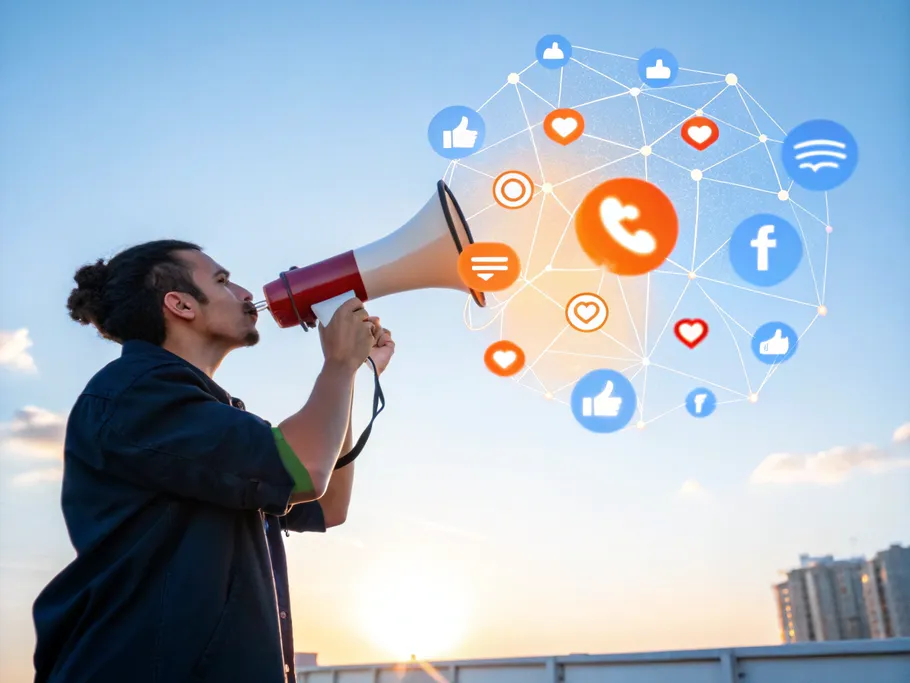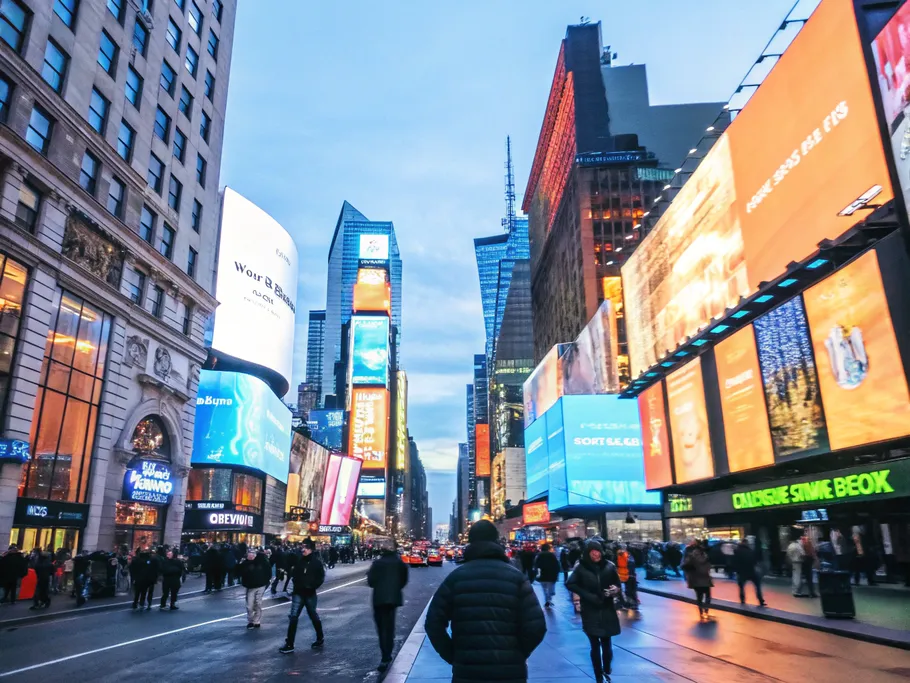Skyrocketing Sales Without Wasting a Dime
Every day you wake up, check your phone, and—bam—you’re hit with ads before you even brush your teeth.
It happens to everyone.
The average consumer is bombarded with anywhere from 4,000 to 10,000 ads daily. It’s a noisy, chaotic mess, where brands fight for visibility like gladiators in an overcrowded arena. Scrolling through Instagram? More ads. Walk down the street? Billboards, flyers, and a guy flipping a sign on the corner.
All ads are trying to do the same thing: Stay true to their brand, stand out, and get themselves in your head.
If you’re a business owner, this reality cuts both ways. Sure, you need marketing, but in a world drowning in noise, how do you make sure your brand isn’t just another forgettable blip? Should you go all in on TikTok? Pour cash into PPC ads? Start a podcast? Write a blog? Run screaming into the void?

Trying to do everything at once is a one-way ticket to burnout.
The secret isn’t to do more—it’s to do what actually moves the needle. And that means getting back to the basics.
Promotion gets you noticed, but without knowing your audience, you’re just shouting into the void. Pricing needs to hit that sweet spot—too high, and they run; too low, and they wonder what’s wrong. A killer product is non-negotiable (because no amount of marketing can fix ‘meh’). Selling isn’t about being pushy—it’s about making people want what you’ve got. Distribution puts you in the right place at the right time, and financing keeps the whole show running.
Master these marketing fundamentals, and boom—a strategy that actually works.
But based on these, what are the most effective digital marketing tactics for entrepreneurs? And can you seamlessly blend the best digital and physical marketing methods into one powerhouse approach?
Here are 9 steps to get you to explosive business growth.
Stop trying to be everywhere. Instead, prioritize your physical and digital marketing channels like a pro:
Look at Guinness. Their iconic Surfer ad from 1999 is still legendary. But did they stop there? Nope. They evolved, shifting their marketing to digital-first video campaigns that still feel like Guinness—proving that storytelling + modern platforms = pure marketing gold.
Relying only on digital marketing works—until it doesn’t.
The magic happens when digital and physical marketing work together.
Think social media, email campaigns, SEO, and PPC ads. These tactics let you target specific audiences with pinpoint accuracy.
You might spend a great deal of time thinking of ‘how to create a digital marketing plan for my business’, but there’s a catch—online ads can be forgettable (and let’s be honest, kind of annoying).
Billboards, direct mail, in-store experiences—now these stick in consumers’ minds. But the flipside is that they’re harder to track, which makes marketers nervous.
The solution? Blend them.
Ever scanned a QR code on a restaurant menu or billboard? That’s digital and physical working in perfect harmony – and today, brands can easily generate QR codes to bridge that gap instantly.. Brands that understand this aren’t just existing—they’re thriving. Take Nike. Their ‘House of Innovation’ flagship stores are an experience, packed with digital screens and in-store apps that let shoppers customize sneakers, check availability, and interact with the brand in ways that blur the line between online and offline. The result? A seamless, immersive brand experience that customers can’t get enough of.
By aligning digital and physical touchpoints, businesses can deliver consistent messaging and smooth transitions that enhance customer experience and foster brand loyalty.
| Digital Marketing | Physical Marketing |
|---|---|
| Content Marketing | Print Marketing |
| Social Media Marketing | One-to-one Marketing |
| Native Advertising | Outdoor Marketing |
| Marketing Automation | Broadcasting |
| Pay Per Click (PPC) | Direct Mail |
| Affiliate Marketing | Referral Marketing |
| Email Marketing | Direct Advertising |
| Online PR | Donations |
| Inbound Marketing | Use of Labels |
| Search Engine Optimization (SEO) | Gift Giving |
Combining digital and physical strategies gives you at least 5 benefits:
First, it smooths out the customer journey—because nothing kills a sale faster than a clunky experience. Ever found a product online, only to walk into the store and get blank stares? Yeah, don’t be that brand.
Second, it makes switching between online and offline a breeze—like when you spot a beautiful dress in-store, and your size is available online (click, bought, done).
Third, it turns your brand into something people actually remember—because a viral campaign plus a real-world touchpoint? Perfect.
Fourth, it keeps the old-school crowd happy—because, believe it or not, some people still love catalogs and in-person shopping.
And finally, it cranks up brand visibility—because when you’re everywhere, you’re unforgettable.
Even though many people confuse them, digital marketing and UX design are actually different things.
Digital marketing is all about revenue generation and customer acquisition. The goal? To convert leads into paying customers. UX design, on the other hand, is all about customer satisfaction and creating a positive and engaging user experience.
Think about customers loving spending time on your website – that’s good UX design. A clunky website, on the other hand, is like inviting customers into a store and then locking the doors. If your site isn’t easy to navigate, fast, and actually functional, you’re bleeding potential sales.
Quick UX Fixes for Maximum Impact:
Investing in user experience (UX) isn’t just a nice-to-have—it’s a game-changer that boosts conversions, reaches the right people, keeps them engaged, and makes your brand look like it actually knows what it’s doing.
With better UX, you get:
Nobody wants another generic, SEO-stuffed blog post.
If you want people to actually pay attention, your content needs to teach, entertain, or inspire—ideally, all three.
Example? Red Bull’s ‘Stratos’ jump. They didn’t just sell an energy drink—they created a moment in history, and then turned it into endless digital content that people actually wanted to share. That’s how you do content marketing right.
Not all platforms are created equal. Here’s how to choose wisely:
With an average 6% conversion rate, email marketing outperforms social media. The trick? Stop making your emails feel like ads.
To make emails that people actually open, Personalize them. No one likes a “Dear Valued Customer” email. Or, tell a story. Instead of pushing products, make it interesting. Another good idea is to put value first, sales later. Give before you ask.
For a more personalized touch, use an AI humanizer tool to help tailor your emails to individual preferences, ensuring they feel personal and relevant.
Result? Customers actually look forward to opening your emails.
A single influencer post can drive more sales than months of traditional ads. But only if done right.
Find influencers who genuinely align with your brand. Let them create content their way—don’t force a script. And consider micro-influencers (the ones with less than 50K followers) – often perform better than mega-celebrities.
Affiliate marketing is another no-brainer. Why? Because you only pay when sales happen. Amazon’s affiliate empire? Proof that word-of-mouth, at scale, is unstoppable.
Organic traffic (SEO) is like compound interest—slow at first, but over time, it pays off big.
Then there are PPC (pay-per-click) ads that are your instant boost when you need quick wins. PPC advertising allows businesses to pay only when someone clicks their ad. It helps secure top-ranking positions and demonstrate credibility.
For long-term success? SEO.
For immediate results? PPC. Use targeted PPC campaigns to gain immediate visibility on search engines. Want proof? The first five search results on Google get 67% of all clicks. If you’re not there, you’re nowhere.
For marketing dominion? Use both.
People hate ads—until they don’t.

Native advertising blends in seamlessly with content, making it feel less like a sales pitch and more like a natural part of the experience.
Native ads come in many disguises—articles, infographics, or videos that blend right in with organic content. They sneak into “recommended for you” or “you might like” sections, pose as organic map search results, or pop up as opt-in video ads in games. Some are short videos seamlessly woven into an app’s content stream, while others mimic search results so well, that you’d swear they were the real deal.
Example? The New York Times + Netflix’s ‘Orange is the New Black’ sponsored article. It didn’t scream “BUY NETFLIX!” Instead, it told a compelling, well-researched story about women in prison. The result? High engagement, low annoyance.
Marketing today isn’t about choosing digital or physical—it’s about mastering both. And the brands that win are the ones that prioritize the right strategies, not try all of them.
They invest in UX, content, and SEO for long-term gains. They leverage social media, influencers, and native ads to stay top of mind. And they blend digital reach with physical impact.
A great marketing strategy isn’t just about visibility—it’s about connection.
Stop drowning in a million mediocre strategies and focus on the few that actually move the needle. The brands that make people feel something? They’re the ones that stick.

Email subscription is available ONLY TODAY (oh, okay, and tomorrow).
Surely, we respect your inbox! Unsubscription works every day.

We’d love to tailor your experience — which of these best describes you?